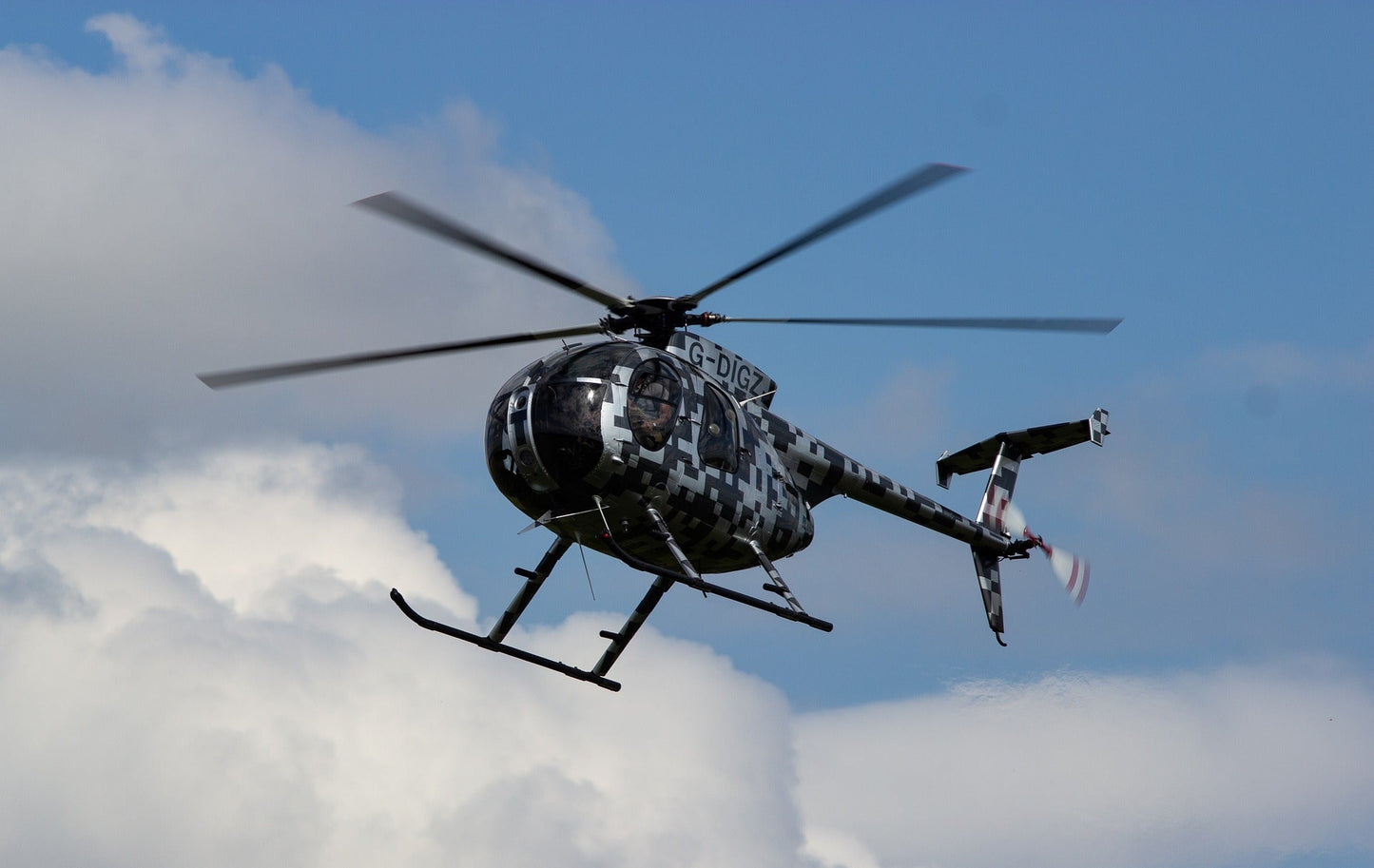
Kore Aviation - Helicopters are uniquely appealing due to their versatility. From rescuing people on mountains, taking off from rooftops, and even maneuvering through tighter places that planes cannot reach, helicopters are capable of it all. However, one question continues to fascinate aviation enthusiasts and the general public: how high can a helicopter fly?
Whether you're flying one or just watching from the ground, this topic always sparks curiosity.
How High Can a Helicopter Fly Normally?
Under normal conditions, helicopters can fly at altitudes between 10,000 and 12,000 feet (about 3,000 to 3,700 meters or 3 to 3.7 kilometers). This range provides optimal vertical space for safe movement, fuel efficiency, and communication-critical parameters for civilian and military operations.
But that’s not the limit. The highest altitude ever reached by a helicopter is 40,820 feet (12,442 meters), a world record set by Jean Boulet in a modified Old Aérospatiale. That is 12.4 kilometers above sea level, higher than commercial jets flying most of their routes.
So when you ask, "how high can a helicopter fly?" know that while the sky isn't the limit, it comes close.
Why Don’t Helicopters Always Fly Higher?
At higher altitudes, the surrounding air gets thinner which creates a few challenges, such as less oxygen required for combustion and air pressure for efficient rotor lift. In addition, it becomes more complex when considering heavier loads (passengers, fuel, cargo) that make higher flying more difficult.
Another very important factor for pilots is communication and focus; at higher altitudes, communication in the cockpit becomes increasingly essential. This is why many pilots choose Kore Aviation, as they are designed with superior noise reduction and comfort for long wear. The Kore Aviation H1 Helicopter Headset is especially favored for its reliable clarity, noise-cancelling microphone, and durability in high-altitude conditions.
Breaking It Down: Altitude in Feet, Meters, and Kilometers
For those who want the numbers, here’s a breakdown:
|
Normal Operating Ceiling: |
Maximum Recorded Altitude: |
|
10,000–12,000 feet |
40,820 feet |
|
3,000–3,700 meters |
12,442 meters |
|
3 to 3.7 kilometers |
12.4 kilometers |
Only specially modified helicopters flown by trained pilots ever reach such extreme limits. For everyday flights, staying within the average range ensures reliability and safety.
When Does a Helicopter Become Silent From the Ground?
Have you ever seen a helicopter flying in the sky and realized that the sound is gone? It has to do with the way the sound travels. Rotor sounds fade as the helicopter climbs. In quiet areas, the sound usually drops off between 2000 and 3000 feet or about 600 to 900 meters. In cities, background noise can drown it out even sooner.
A helicopter must fly 8,000 feet (2.4 kilometers) or above to achieve near silence. This is not often possible for medical, news, or search and rescue flights. Still, it does happen, especially in mountain regions.
Whether they're seasoned or just starting out, many pilots rely on Kore Aviation headsets for clear communication and reliable noise isolation, especially in challenging conditions like flying through clouds.
Can a Helicopter Fly to the Top of Mount Everest?
Short answer: yes, but there are some conditions.
Mount Everest is 29,032 feet (8,848 meters) high, and flying a helicopter that high pushes both the aircraft and the pilot to their limits. In 2005, French pilot Didier Delsalle landed a Eurocopter AS350 B3 helicopter on the summit of Everest. This feat became possible with a helicopter in its most basic form and under perfect conditions.
Can a helicopter fly to the top of Mount Everest? Technically, they can, but it is as difficult as winning an Olympic gold medal: extremely dangerous and challenging. In general, helicopters operate at about 21,000 feet (6,400 meters) during high-altitude rescues, such as those performed from Camp II on Everest.
Special Ops: How High Do Military Helicopters Fly?
While the CH-47 Chinook and UH-60 Black Hawk helicopters are designed for extreme military endurance, they often exceed standard operating limits. These aircraft have performed combat missions above 20,000 feet (6,000 meters) in extremely challenging battlefields.
In those conditions, communication and safety should not be compromised. That’s where equipment like high-quality headsets comes in—ensuring pilots stay focused and connected no matter the mission.
Why Knowing How High a Helicopter Can Fly Matters
It's not just a fact or a number - it has significant implications. Here is how an understanding of helicopter altitude is essential: it serves many practical purposes, such as:
- Helicopter search and rescue missions: Asking if a helicopter can access a remote location for a trapped climber.
- Training for prospective pilots: Determining appropriate altitude limits for safe flight.
- Military and civil mission planning: Determining where Apache or Blackhawk undercover attack helicopters can be deployed.
As mentioned earlier, this emphasizes the need for a pilot to maintain high attention and agility. At altitudes of 3,000 and 13,000 meters, a pilot is free from distractions and can focus on navigation due to the aircraft's ergonomic features.
Discover More: What Does a Helicopter Pilot Do? Skills, Challenges & Gear
Final Thoughts: So, How High Can a Helicopter Fly?
What are helicopters' limits? They can only fly as high as the physics of our world allows, which, combined with engineering, is relatively high. Helicopters excel at adjusting to varying circumstances. Although most helicopters prefer to fly below 12,000 feet, specialist models have reached beyond 40,000 feet.
But altitude alone doesn’t tell the whole story. What matters is how it is prepared, what training the pilot has, what strategies are employed, and what tools are available. For many pilots, that means equipment built for clarity, comfort, and reliability, like the headsets from Kore Aviation
